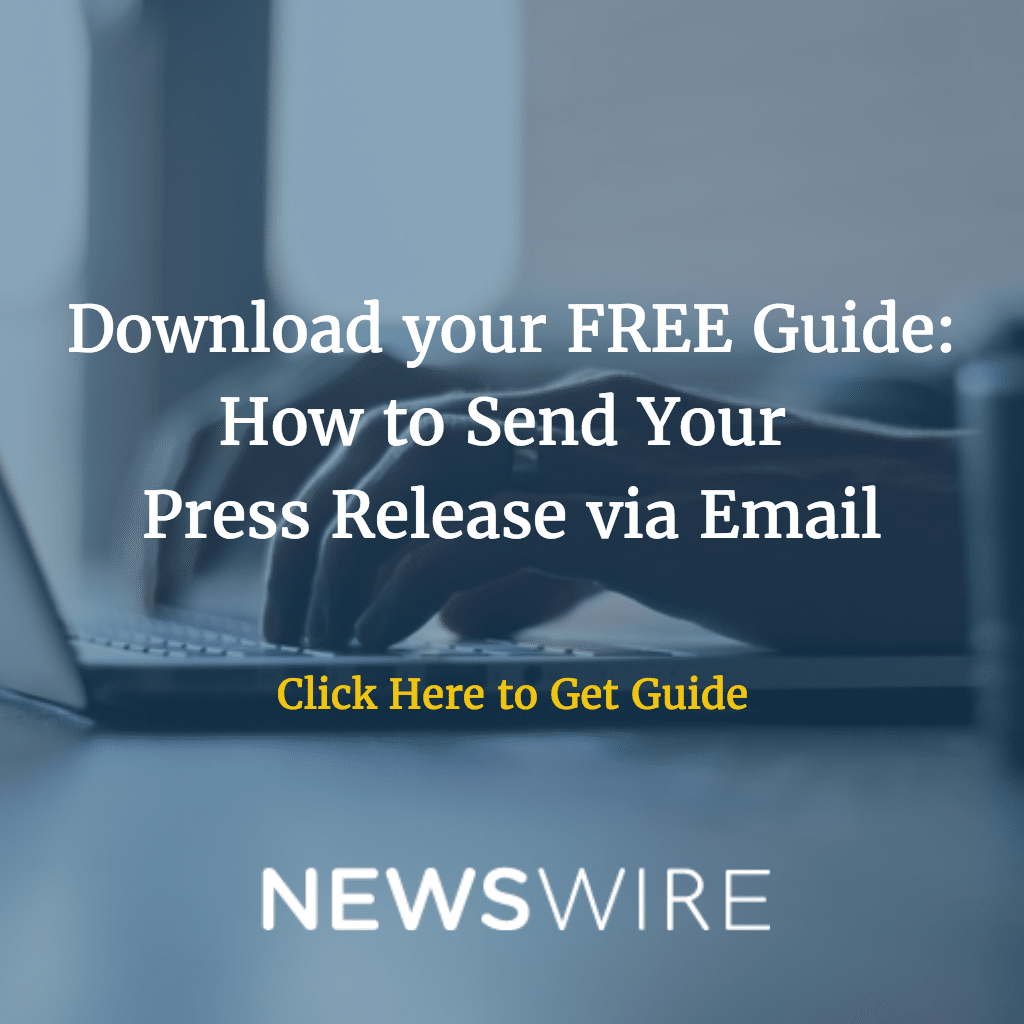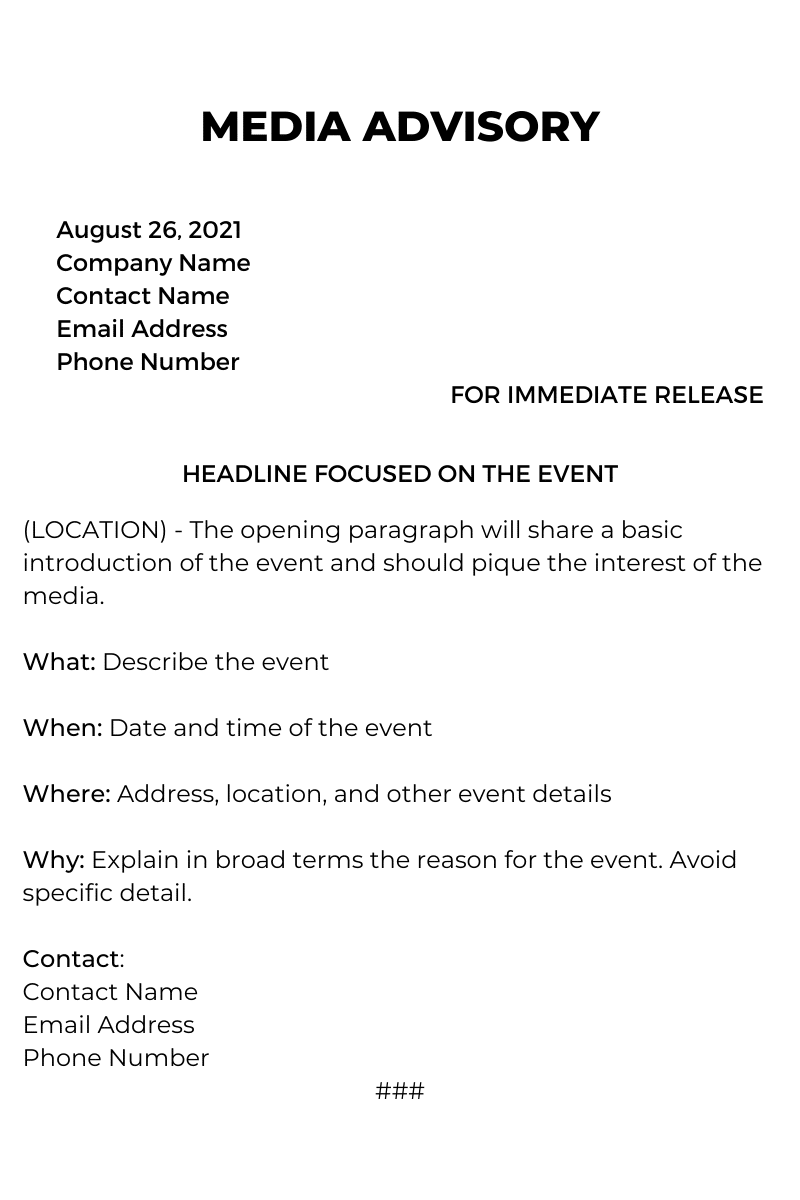
What’s the Difference Between a Press Release and a Media Advisory?
Whether it’s through social media marketing, email campaigns, pay-per-click (PPC) advertising, press releases, or a media advisory, there are a variety of ways for companies to promote their business in the digital world.
In this blog post, we’re focusing on press releases and media advisories. There are two options companies can use to build brand awareness, drive website traffic, generate leads, and more.
What’s a press release?
A press release is a compelling and concise news story that’s typically written by a public relations professional and distributed to targeted media sources to announce something newsworthy.
The goal of a press release is to secure coverage from relevant publications and stay in front of a company’s target audience.
Press releases can cover important news such as:
- The release of a special report
- A company milestone
- A new product announcement/launch
- A new round of funding
- Announcement of a new executive
- And much more
No matter the announcement, when written correctly, press releases should address the who, what, where, when, why, and how.
These are commonly referred to as the 5 W’s + How, which make up the foundation of the inverted pyramid.
The inverted pyramid is an integral piece in the overall press release format puzzle, which works together to maximize the effectiveness of a company’s ability to not only reach their target audience but the media as well.
What’s a media advisory?
A media advisory, or media alert, isn’t a full story. It’s a one-page description, an invitation to the press to attend an event you’re hosting, and includes the most important details of the event.
The event could be a press conference, grand opening, book signing, live demonstration, and so on.
Creating and distributing a media advisory is a great way to generate buzz around your event and encourage the media and journalists from relevant publications to attend as well.
As mentioned before, a media advisory includes only the most important details. If you’ve never created a media advisory before, here are some tips to consider:
Media Advisory Must-Haves
At the top of the page, type MEDIA ADVISORY in a large, bold font.
On the left-hand side, include the date of the alert and the following contact information:
- Company name
- Your first and last name
- Email address
- Phone number
Just as you would format a press release, use the 5 W’s to address the most important details.
When you put these elements together, your media advisory should look something like this:
4 Main Differences Between a Press Release and Media Advisory
Now that we have an understanding of what a press release and a media advisory are, let’s take a look at four main differences between the two to help you leverage the right approach for your next campaign.
Purpose
A media advisory, or media alert, is a quick and concise overview that encourages attendance at an upcoming event.
Press releases, on the other hand, can promote or recap an event or share a newsworthy company update. Press releases highlight the most important details and provide information about the business as well.
Length
A press release should be between 400 to 500 words, while a media advisory is typically around 100 to 150 words.
Timing
When you send an invitation to a birthday party, for example, you want to do so with enough time for people to check their schedules and save the date for your event. The same notion applies to a media advisory, which should be sent to media outlets well before the date and time of your business’ event.
Media advisories should be sent twice. The first should be sent 5-7 days before the event, and the second should be sent the day before the event to serve as a reminder.
Press releases, on the other hand, don’t have to be tied to a specific event, which creates room for the timing of distribution.
To that point, the number of press releases a business sends is contingent on its unique marketing goals.
It takes consistency and analysis of data to uncover the best days, times, and the frequency to effectively distribute press releases for your company.
Audience
Press releases are distributed widely via press release distribution services on the wire. But because a media advisory acts like an invitation, they’re distributed to relevant reporters and journalists in the local media.
If you’d like to learn more about the value of press release distribution and the creation of media advisories, contact us today to speak with one of our PR Strategists.













